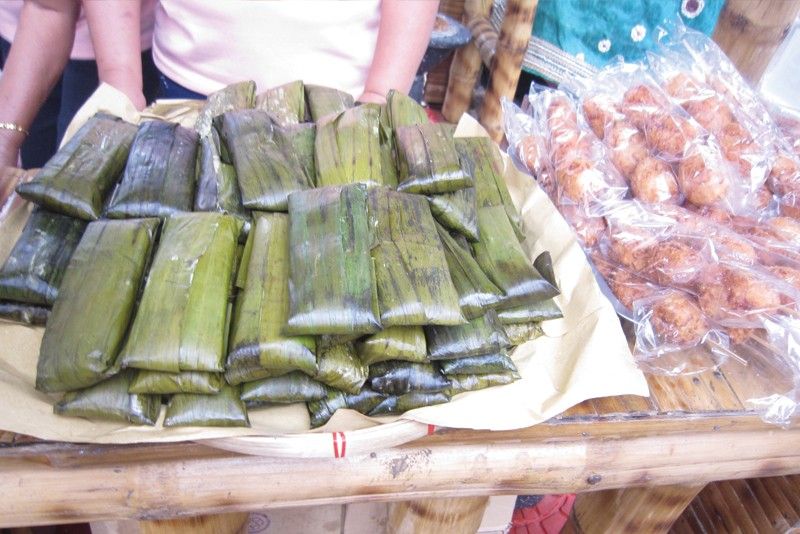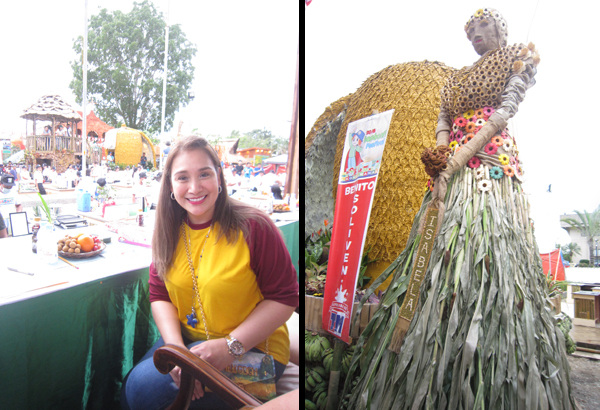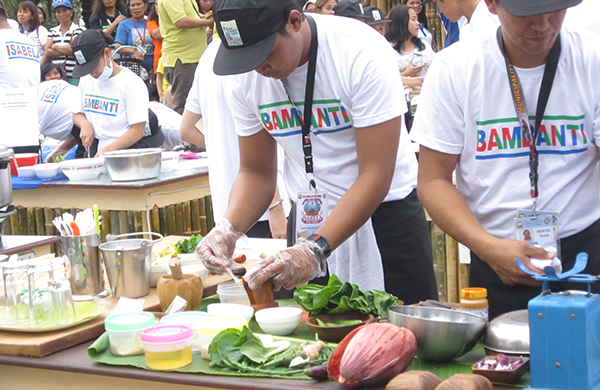Inatata, bala-bala & other food finds at bambanti

Moriesco, suman stuffed with latik from Cabatuan
MANILA, Philippines — Bambanti. It is the Ilocano word for “scarecrow.” In Isabela, where close to 69 percent of the population are Ilocanos, the province’s premier festival is named after the bambanti. The annual festivity not only pays tribute to the figurative guardian of the rice fields but also displays a literal outpouring of joy and thanksgiving for a bountiful harvest.
Located on the northeastern seaboard of Luzon, Isabela is the country’s second largest province in terms of land area, occupying almost 40 percent of the Cagayan Valley region. With its rolling terrain and fertile plain, between the foothills of the Central Cordillera mountain range to the west, the Sierra Madre to the east, and the grand Cagayan River that runs through it, Isabela thrives primarily on agriculture. It is the country’s No. 1 corn and monggo producer, as well as the country’s biggest rice surplus producer.
The Mindanao Grains Corn Processing facility in the municipality of Reina Mercedes is the biggest post-harvest plant in Asia. The Magat Dam in Ramon is the biggest dam in Southeast Asia, supplying the energy needs of Central Luzon and Metro Manila while servicing the irrigation needs of 95,000 hectares of farmland all year round.
With the theme “Isabela kong mahal” (Isabela, my beloved), this year’s Bambanti Festival, which was held from Jan. 22 to 27, featured a weeklong Agri-Ecotourism Exhibit and Sale at the pop-up Bambanti Village within the grounds of the provincial capitol in Ilagan City.
The 34 municipalities and three cities of the province set up their individual booths, each showcasing the different products they are best known for, such as mung beans (monggo) from San Mateo; aromatic red rice called Pinilisa from Jones; rice wine made from brown rice from Luna; moriecos, a sticky rice cake (suman) stuffed with latik (coconut syrup) from Cabatuan; Inatata (an Ibanag name), tiny suman also known as bala-bala, so called since they resemble a magazine of bullets when strung together; and pancit miki from Cabagan, to mention just a few of the many local products and delicacies on sale.

Mary Ann Dy(left), wife of Isabela Governor Faustino Dy III at the Makan Ken Mainum-Master Kusinero Cookfest. A giant bambanti(right) installation using organic materials at the Bambanti Village
Naturally, there was corn on the cob, corniks from Luna, white corn coffee grounds from Santa Maria, and even flower bouquets made from corn husks. Fresh produce, fruits and vegetables were bountiful: okra, eggplant, ampalaya, kalabasa, cacao, and mushroom from Cauayan. Woven mats, bags and hats, as well as wood items from Quirino, were on sale.
Ilagan City is known for its furniture made of quality narra, and boasts a giant butaka — its entry in the Guinness Book of Records for the biggest lounge chair in the world.
The award for the best Agri-Tourism Booth was given to Naguilian, a town in central Isabela. Giant bambanti installations added color, fun, and even humor to the displays. The giant mannequins were dressed in costumes with intricate embellishments using beans, seashells and other organic materials.
The award for the Best Giant Bambanti Installation went to the town of Burgos.
The “Makan Ken Mainum: Master Kusinero Cookfest” was held at the Bambanti Village, with 29 municipalities from four districts participating. The main ingredient that all the contestants had to work with was kambing (goat meat).
“It’s a basic dish here, which is served in every party, fiesta, and even in our home,” said Mary Ann Dy, wife of Isabela Governor Faustino “Bojie” Dy III.
Participants, who were chosen by their mayors, submitted their recipes in advance and underwent a screening process. The recipes were innovative, such as kare-kareng kambing and a kambing burger, or “kamburger,” according to Mrs. Dy. “No two recipes were alike.”

Goat meat was the main ingredient at the Makan Ken Mainum cook fest held at the Bambanti Village.
“This is an opportunity for the different municipalities to highlight their indigenous produce,” chef Cocoy Ventura remarked. “There are several indigenous communities in Isabela, like the Ibanag, and each of these minorities have their own dishes.” (Other ethnic groups include the Gaddang and the Yogad.)
Echague, which is known for its rice and cassava cakes, won first place for both Best Makan and Best Mainum Ti Isabela title.
Easily considered the highlight of the festival was the Street-Dance Parade Competition and Festival Dance Showdown Competition, which was held at the humongous Isabela Sports Complex that has a capacity of up to 40,000 spectators.
And what a show it was. Wave upon wave of dancers in colorful bambanti costumes paraded around the oval in coordinated dance steps, and then each group representing a particular municipality broke out with their own choreography and exhibition as they approached center stage. It was an extravaganza of epic proportions, and credit must be given to the overall artistic director, Nilo Agustin, as well as all the other directors, choreographers, production managers and parade marshals for pulling it off seamlessly to the very end, despite the rain that poured later that night.
First place for both the Best Street Dance Contingent and Best Dance Showdown title went to the municipality of Alicia. Cauayan City, which won first place in the Choral Group competition, as well as Festival Queen, was declared the overall winner.
Aside from the much-coveted bragging rights, the winners also received a generous cash prize from the provincial governor’s office for their town’s priority projects.
The province now has its sights set on the promotion of eco-tourism. Isabela has much to offer adventure seekers and nature lovers. There are mountains for trekkers to conquer and caves to explore. UNESCO declared the Palanan Rainforest, one of Asia’s remaining virgin rainforests, one of the most biodiversity-rich rainforests in the world.
The Northern Sierra Madre Natural Park is the largest protected area in the country. It is the habitat of 60 percent of Philippine endemic flora and fauna species, as well as home to the indigenous Agta people, the original inhabitants of the Sierra Madres.
There are the centuries-old churches, such as the St. Paul Church in San Pablo, which dates back to the 17th century; St. Matthias Church in Tumauini, with its cylindrical belfry; and the church of Nuestra Señora del Pilar in Cauayan, where a pair of colonial bells is displayed outside the church.
The 5,000-hectare bonsai forest in the remote coastal town of Dinapigue is a natural wonder. Coastal Isabela’s 113-kilometer shoreline, with its fine white sand, faces the great Pacific Ocean. The heart-shaped Honeymoon Island has the potential to be developed into a high-end resort like the very exclusive Balesin Island, with its own airport. At present, Cebu Pacific flies daily from Manila to Cauayan City, which is centrally located in Isabela.
“The goal is to attract investors to put up hotels to accommodate tourists,” Mrs. Dy remarked.
At the same time, there is a conscious effort to protect the IPs, who are the original inhabitants of the area.
A Grand Concert Party was held on the last day of the festival, headlined by popular singer-songwriter Ogie Alcasid. Among the other performers were all-girl singing group the Fourth Impact. It was a happy homecoming for the four talented sisters, who are natives of Isabela.
The Bambanti Festival closed with a Grand Fireworks Display that lit up the midnight sky.



















